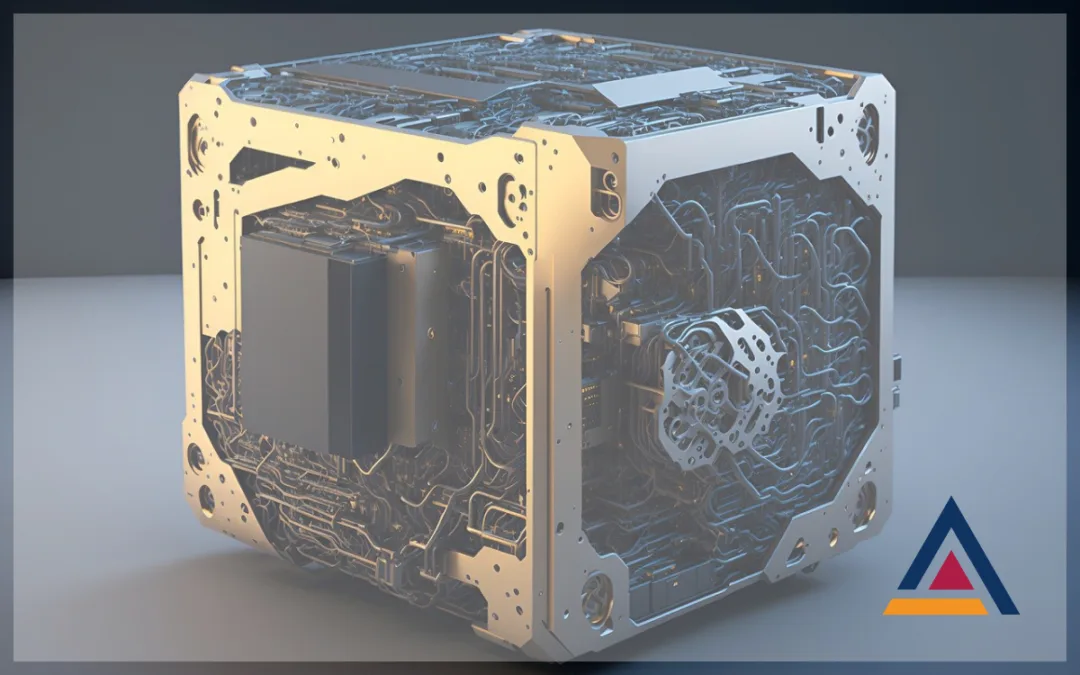In the ever-evolving landscape of technology, two revolutionary fields are converging, promising to reshape the future as we know it: quantum computing and artificial intelligence (AI). These two cutting-edge technologies, each with its own profound implications, are joining forces to push the boundaries of what’s possible in computing, problem-solving, and data analysis. In this blog, we’ll explore this exciting synergy between quantum computing and AI, uncovering the potential they hold, the challenges they face, and the real-world applications that are already changing industries.
The Quantum Advantage for AI
Quantum computing, based on the principles of quantum mechanics, brings a new paradigm to computing power. Unlike classical computers that rely on bits to represent data as either 0 or 1, quantum computers use qubits, which can exist in multiple states simultaneously. This property, known as superposition, allows quantum computers to explore many solutions in parallel, making them exceptionally well-suited for certain AI tasks.
Here are some ways in which quantum computing enhances AI:
Faster Optimization: Quantum algorithms can quickly solve complex optimization problems, such as route planning and resource allocation, which are critical in AI-driven logistics and supply chain management.
Machine Learning Speed-Up: Quantum computers can accelerate machine learning tasks, reducing the time needed to train AI models and enabling real-time decision-making.
Enhanced Data Analysis: Quantum computers can process and analyze vast datasets, which is invaluable in fields like healthcare, finance, and scientific research.
Real-World Applications
The collaboration between quantum computing and AI isn’t confined to theoretical possibilities; it’s already making waves in various industries. Here are some real-world applications:
Drug Discovery: Quantum computers can simulate molecular interactions at an unprecedented level, greatly accelerating the drug discovery process.
Finance: Quantum computing is used for risk assessment, portfolio optimization, and fraud detection in the financial sector.
Cryptography: Quantum-resistant encryption methods are being developed to secure data against the potential threat of quantum attacks.
Materials Science: Quantum computers help design new materials with specific properties, benefiting industries like aerospace and electronics.
Challenges and Limitations
While the prospects of quantum computing and AI synergy are thrilling, there are challenges to overcome. Quantum computers are still in their infancy, with limited qubits and high error rates. Integrating them effectively with AI systems requires addressing these technical hurdles.
Moreover, developing quantum algorithms that outperform classical counterparts in all AI tasks is an ongoing endeavor. It’s crucial to manage expectations while exploring the potential.
Quantum Computing and AI in the Everyday World
The fusion of quantum computing and AI is not a distant, abstract concept. Its applications are already seeping into our everyday lives, albeit sometimes unnoticed. Virtual assistants, like Siri or Alexa, have become more efficient and better at understanding and responding to natural language, thanks to AI algorithms run on powerful quantum computers in the cloud. Recommendations on streaming platforms, online marketplaces, and even social media feeds are increasingly personalized and accurate due to AI’s improved machine learning capabilities, driven in part by quantum processing.
Moreover, quantum computing is beginning to make an impact in various scientific fields. In the realm of climate science, quantum computing and AI are employed to simulate complex climate models and predict environmental changes more accurately. This helps us develop better strategies for addressing global challenges such as climate change.
Collaboration on the Horizon
The synergy between quantum computing and AI is not a one-way street. While quantum computers have the potential to supercharge AI, AI can be instrumental in improving quantum computing. Machine learning algorithms can help mitigate errors and improve the overall stability of quantum computations. AI-driven calibration techniques can enhance the performance of quantum hardware, which is crucial for practical, real-world applications.
The collaboration between these two technologies is a two-way street, with each driving innovation in the other. As the fields continue to evolve, we can expect to see rapid advancements in both quantum computing and AI, with far-reaching implications for our world.
The Road Ahead
The future of technology is evolving rapidly, with quantum computing and AI leading the charge. As quantum computers become more accessible and AI algorithms continue to improve, the synergy between the two fields will only deepen.
Keeping up with these developments and understanding their implications is essential for anyone interested in the ever-changing landscape of technology. The possibilities are tantalizing, and the road ahead is filled with exciting discoveries and innovations. We’re at the cusp of a new era in computing, where the power of quantum and the intelligence of AI come together to unlock the next generation of technology.
So, stay tuned, because the journey is only beginning, and the destination is still unknown. The future of technology is here, and it’s an exhilarating ride into the unknown.
Conclusion
As quantum computing and AI join forces, we stand at the threshold of a technological revolution. These two fields together promise to address complex problems, accelerate scientific discoveries, and transform industries across the board. While challenges remain, the trajectory of progress in quantum computing and AI synergy is nothing short of remarkable. Stay tuned for a future where this collaboration opens doors to innovation, solving challenges we once thought insurmountable and shaping the way we interact with technology in ways we can only imagine. The future of technology is truly exciting, with quantum computing and AI leading the way.

